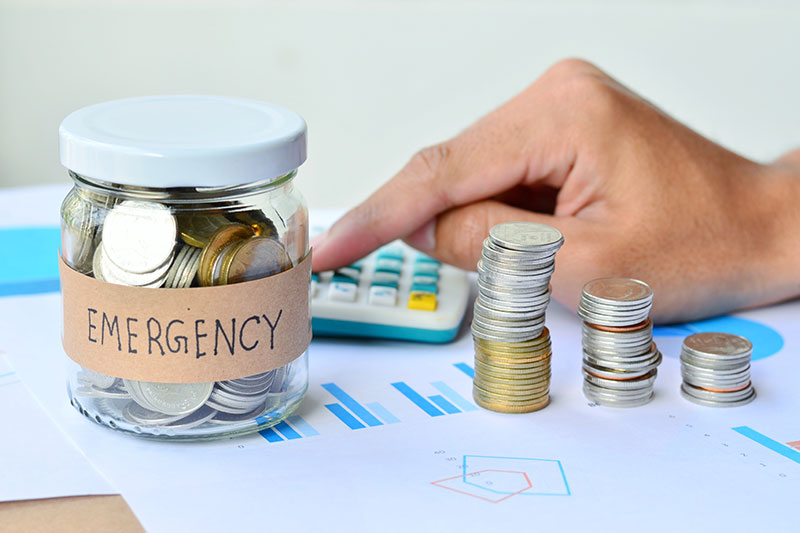The Importance of Emergency Funds: Why You Need One and How to Build It
Introduction:
Life is full of unexpected surprises, and being prepared for emergencies is crucial for maintaining financial stability. That's where emergency funds come into play. In this comprehensive guide, we will explore the importance of emergency funds, why everyone should have one, and provide practical steps to help you build your own. By understanding the significance of emergency funds and taking action to establish one, you can protect yourself from financial hardships and enjoy peace of mind.
Why You Need an Emergency Fund:
1. Unforeseen Expenses:
- Emergencies can strike at any time, whether it's a sudden
medical bill, home repair, or an unexpected job loss. Without an emergency
fund, you may be forced to rely on credit cards or loans, which can lead to
debt and financial stress.
- An emergency fund provides a financial safety net,
allowing you to cover unexpected expenses without derailing your overall
financial well-being.
2. Job Loss or Income Reduction:
- Losing your job or experiencing a significant reduction in
income can have a severe impact on your financial stability.
- An emergency fund
can bridge the gap during these challenging times, giving you the freedom to
search for a new job or explore alternative income sources without the
immediate pressure of meeting financial obligations.
3. Peace of Mind:
- Knowing that you have a cushion of funds available for
emergencies brings peace of mind. It allows you to navigate life's
uncertainties with confidence, knowing that you have the financial means to
handle unexpected events.
- This peace of mind extends to your overall well-being
and reduces stress levels, enabling you to focus on other important aspects of
your life.
How to Build an Emergency Fund:
1. Set a Target Amount:
- Start by setting a target for your emergency fund. A general guideline is to save three to six months' worth of living expenses, although this may vary depending on your individual circumstances.
- Consider factors such as your job stability, family size, and any specific risks or financial commitments you may have.
2. Start Small and Be Consistent:
- Building an emergency fund doesn't happen overnight. Start by setting aside a small amount from each paycheck and gradually increase the contribution over time.
- Consistency is key, even if the initial contributions seem modest. Every dollar counts, and with discipline and perseverance, your emergency fund will grow steadily.
3. Automate Savings:
- Make saving automatic by setting up a recurring transfer from your checking account to a separate savings account dedicated to your emergency fund.
- This way, you won't have to rely on willpower alone to save. Treat your emergency fund savings as a priority bill that must be paid each month.
4. Cut Back and Redirect:
- Review your budget and identify areas where you can cut back on unnecessary expenses. Redirect the money saved from these cutbacks directly into your emergency fund.
- Consider reducing discretionary spending, renegotiating bills, or finding more affordable alternatives. Every expense you trim will accelerate the growth of your emergency fund.
5. Supplement with Windfalls:
- Take advantage of windfalls, such as tax refunds, work bonuses, or unexpected cash gifts, to boost your emergency fund.
- Instead of splurging on non-essential purchases, allocate a portion or the entire windfall towards your fund. These unexpected inflows can significantly expedite your progress.
6. Keep the Fund Separate and Accessible:
- Maintain your emergency fund in a separate account from your
regular checking or savings account.
- This separation ensures that you won't
accidentally spend the money on non-emergency items. Opt for an account with
easy accessibility, such as a high-yield savings account or a money market
account, so you can access the funds when needed.
Want to know how to create a budget and its works?
How to Create a Budget That Works: A Step-by-Step Guide to Financial Success
Conclusion:
- Building an emergency fund is a critical step in securing your financial well-being. By recognizing the importance of emergency funds and following the steps outlined in this guide, you can establish a financial safety net that provides peace of mind and protects you from unexpected financial setbacks.
- Remember to start small, be consistent, automate savings, cut back on expenses, supplement with windfalls, and keep the fund separate and accessible. With time and dedication, your emergency fund will grow, empowering you to navigate emergencies with confidence and preserve your financial stability. Start building your emergency fund today and invest in your financial future.

Comments
Post a Comment
Write comments